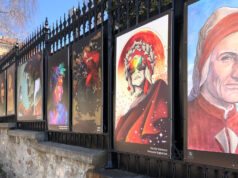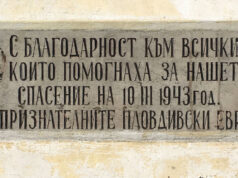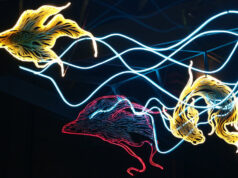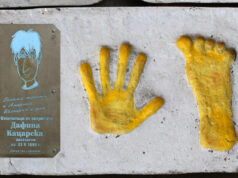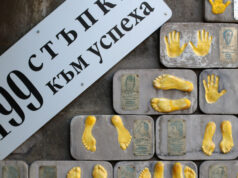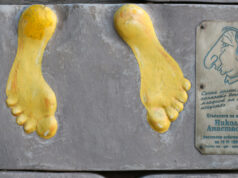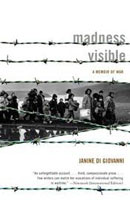 Madness Visible: A Memoir of War is a glimpse into recent Balkan wars told by a journalist through the words of actual observers and participants. The author, Janine Di Giovanni, writes the haunting story of common people who suffered bitterly at the hands of misguided soldiers forcing their way to a “Greater Serbia,” a place for Serbians only, with no Muslims or Croats allowed. The book which may have been edited by a book editor contains brilliant, concise mini- biographies of Slobodan Milosevic and other powerful Balkan leaders who ordered Sarajevo’s bombing, fanning the flames of ethnic intolerance. She covers a wide range of events across multiple geographic locations, from peaceful villages before the war, to life and violence in Kosovo, and finally the distress and privations she witnessed at the front line of battle along the Albanian border.
Madness Visible: A Memoir of War is a glimpse into recent Balkan wars told by a journalist through the words of actual observers and participants. The author, Janine Di Giovanni, writes the haunting story of common people who suffered bitterly at the hands of misguided soldiers forcing their way to a “Greater Serbia,” a place for Serbians only, with no Muslims or Croats allowed. The book which may have been edited by a book editor contains brilliant, concise mini- biographies of Slobodan Milosevic and other powerful Balkan leaders who ordered Sarajevo’s bombing, fanning the flames of ethnic intolerance. She covers a wide range of events across multiple geographic locations, from peaceful villages before the war, to life and violence in Kosovo, and finally the distress and privations she witnessed at the front line of battle along the Albanian border.
The question she confronts is this: what causes neighbors, living at peace all their lives, to succumb suddenly to mutual enmity? Are politicians and government leaders chiefly to blame? Was ethnic harmony false, a thin skin of tolerance easily punctured? Why does a war like this happen? How do people endure atrocities in a battle zone for months or even years and survive to begin all over, afterwards?
The sorrows were many, and cruel betrayals common, during the latest conflict. Di Giovanni believes rational men fall into a kind of insanity takes hold of them for a season in response to the trauma of killing others. For her, war is when irrational craziness appears in the face of your former friend, expressing anguish and obsessive fear. War is visible madness.
She writes about how stalwart citizens refused to abandon their homes in Sarajevo from 1992-96, despite a vicious siege and erratic violent explosions. In Kosovo in 1999, soldiers were stirred to rage, confusion, and ethnic violence roamed from village to village, seizing property randomly, attacking unarmed civilians.
Fighters did not march in orderly lines wearing colorful uniforms to display loyalty to home and hearth– no! Small companies of warriors turned into unregulated bandits who seized guns, knives and assorted weapons. Paramilitary groups were fierce and bestial, neither retreating nor advancing as well-disciplined soldiers.
Police assigned themselves a vicious role, claiming an “anti-terrorist” imperative compelled and empowered them to ferret out pockets of so-called resistance. They did not protect the innocent, but used their authority to rape, pillage and burn villagers in their homes. There was no sense to the violence nor was there pattern to the terror. Where could civilians turn for protection or justice?
The geographic focus of violence moved from region to region, it was not static. Moments of peace, days of cease-fire were grasped at like islands anchored in a sea of fury. For a few transient hours, citizens would desperately seize a normal activity – take the cow out to its pasture, ride the bus, or break out a hidden cache of food to cook a family meal. A still center claimed in the midst of the cyclone of war, division, and madness.
In one of these peaceful periods, Di Giovanni looked at the religious side of one of the Balkan states. In Montenegro, she visited a tiny Orthodox Church set in a fragrant grove of pomegranate. There she interviewed a priest determined to preserve a small fragment of local churchgoers, helping them mark a separate identity from the Serbian Orthodox Christians. To him, acknowledging ethnic uniqueness brought honor to the nation of Montenegro, providing a spiritual sense of home, continuity and history.
“It’s always been in existence – the Orthodox Church of Montenegro– we wanted and needed to have our own church in our own land.” Despite his insistence, other observers said there was no perceptible subset of Montenegro Christians in previous decades. Here we find a small window into the tragic battle for ethnicity and culture in the nation forged as Yugoslavia. The Montenegrin believers existed only inside the other because their church was swallowed by the larger Serbian one. All spiritual groups were assimilated just as smaller, tribal entities were absorbed by giant political ones.
Down the hill, across the river, monks in an ancient Monastery run by Serbian monks and nuns laughed. To them, the insistence of the Montenegrin priest was a joke and they claimed he was discredited, defrocked a while ago. In all the rest of Europe, they argued, people united two or three smaller nations to form one larger entity with economic strength and prosperity. However, here in the Balkans, they said, we break into fragments of small “statelets.” How can we make progress, with such an attitude?
Thus the arguments continued. Sadly, conflict was the only certainty, and the Orthodox Church offered no haven from it. Even there, the insatiable Balkan hunger for distinct ethnic parcels resulted in disorder and division. Political strife found an echo in spiritual confusion – to which church do we belong? Which church is our home? Who are we, Serbian or other? Amidst such confusion, order and disorder, sanity and insanity vie for first place in the hearts of people.
Eventually war was replaced by an uneasy peace imposed by outsiders. Countries accepted a treaty held in place by the presence of foreign soldiers, laying a curtained veneer of quiet upon the mountain villages. Yet even a facade of peace allowed corn to grow – so the crops completed their cycle towards harvest. The school had its session and homes, here and there, were rebuilt. Bitterness and anguish left bruises which faded from the skin’s surface, but the internal damage remained. The visible madness of war receded.
Jeanine Di Giovanni does an admirable job bringing us up close to some of the complex feelings and experiences which mark people in times of war. We should remember such horrors when the urge for violence strikes.


